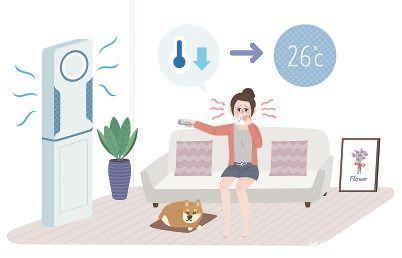The cause of many patients in recent fever clinics is not viral or bacterial infection, but “air conditioning disease”. This is a disease caused by long-term exposure to air-conditioned environment. It is more common in summer. The related symptoms include dizziness, headache, loss of appetite, upper respiratory tract infection, joint pain, etc. The respiratory tract, joint muscles, and nervous system are most easily affected.

A room with air conditioning is generally airtight and has little air flow. If the windows are not opened for a long time, pathogenic microorganisms are easy to breed. Studies have shown that after a few hours in an air-conditioned closed environment, indoor oxygen drops by 13.2%, Escherichia coli increases by 1.2%, rhodochrous bacteria increases by 1.11%, diphtheria bacteria increases by 0.5%, and other harmful bacteria in the respiratory tract are different. degree of increase. The air ducts and hair dryers of the air conditioner are suitable for the survival and reproduction of germs and viruses. The germs and viruses are blown out by the air conditioner, which is easy to cause infection. In addition, the large temperature difference between indoor and outdoor, the human body is not suitable, and it is easy to cause disorders of the autonomic nervous system. For example, the feeling of “cold” will excite the sympathetic nerves, leading to the contraction of blood vessels in the abdominal cavity and the weakening of gastrointestinal motility, resulting in many corresponding symptoms.
How to use the air conditioner correctly in summer? It is recommended that you pay attention to the following points, which can effectively prevent “air conditioning disease”.
1. Use the air conditioner when the weather is sultry. It is best to open the window for ventilation once every two hours, and go to the outdoor shade for a while between work.
2. If there are copiers, printers and other equipment in the room, open windows for ventilation or install exhaust fans during use to ensure indoor air circulation. Remember not to stay in an air-conditioned room for a long time, you can use the morning and evening when the temperature is relatively low to do some outdoor activities.
3. When you experience sneezing, coughing, sore throat, chills and other symptoms after blowing the air conditioner, don’t use the air conditioner anymore, drink more warm water to make your body sweat; indigestion, stomach and abdomen Those who are unwell can take Huoxiangzhengqi Liquid; those who have joint stiffness and pain can apply local hot compresses. If physical symptoms do not improve or worsen, you need to seek medical attention in time.
4. Reasonably adjust the indoor temperature. The temperature difference between indoor and outdoor should not exceed 5°C-8°C, the indoor air-conditioning setting temperature should not be lower than 26°C, and the relative humidity should be kept at 40%-60%.
5. Do not blow the cold air from the air conditioner directly, especially when you are sweating profusely when entering the room from the outside, especially pay attention to the warmth of the cervical vertebrae, knee joints and other parts.
6. Pay attention to indoor hygiene and use detergents to clean the air conditioner regularly to prevent the growth of pathogenic microorganisms. (Author: Beijing Jishuitan Hospital)
Source: Beijing Daily Author: Bai Aihua
Process Editor: L021